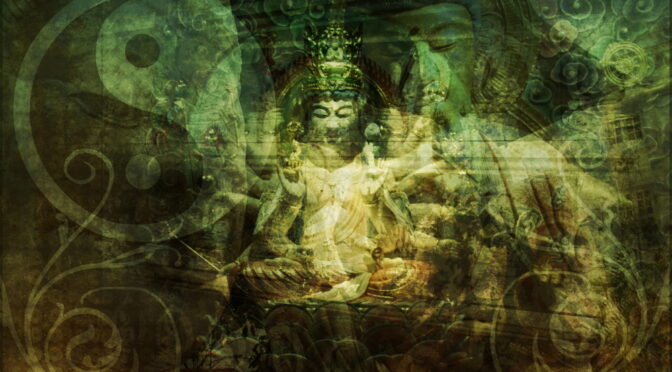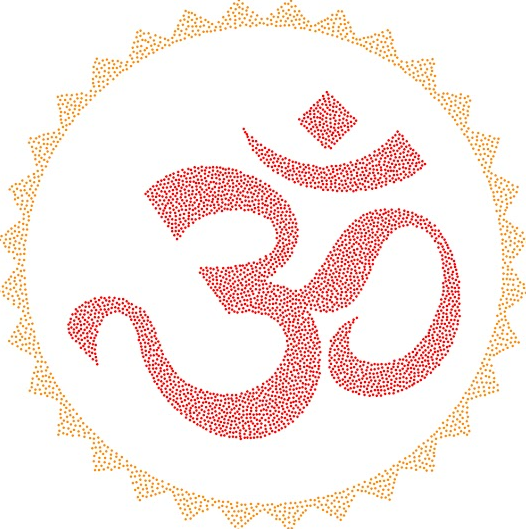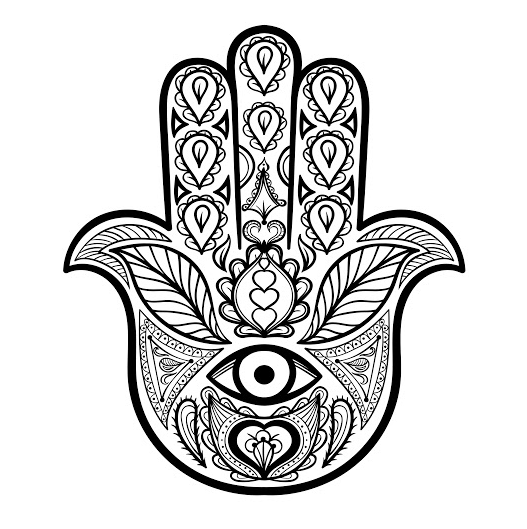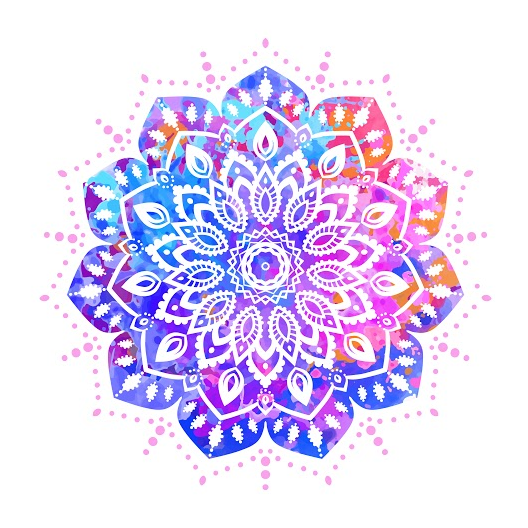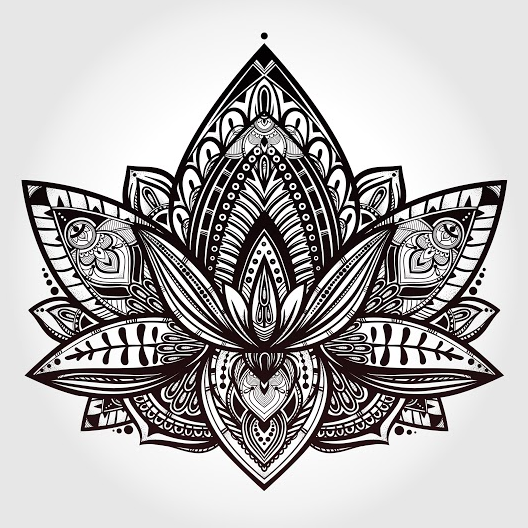Yoga, along with other spiritual practices, can seem shrouded in mystery to anybody beginning to explore them for the first time. Everyone seems to know what they are doing, there are seemingly strange symbols that appear everywhere, and it can be difficult to feel like you fully understand everything, let alone appreciate the significance and importance of those symbols.
Thanks to the internet, and the increasing ease of travel around the world, and specifically to Asia, where many of these spiritual practices originate, these symbols are increasingly entering popular culture and appearing over and over again in our stream of consciousness.
Beginner’s Guide to Yoga Symbols
Some of the symbols below you might already recognise, some may be completely new to you, but we’ll explore the depths of their roots in history, how they came to be so central to the practice of yoga, as well as how they might help you on your personal journey.
Aum or Om
This is a sacred symbol that represents the vibration, sound, and consciousness of the universe. It is very widespread, due to its central resonance and importance to yoga, particularly for its sound. If you ask a kid to show you how to meditate, they’ll probably sit, cross-legged, eyes closed, chanting “ommmm”.
The reason this sound is so important in yoga is because it is thought that the creation of the universe began with a vibration, which became the sound “Om”. This concept originates from Indian religions such as Buddhism, Hinduism, and Jainism.
The written sign itself also symbolises the different states of our lives: awake, asleep, and something in between. A is our wakeful state, experienced with our five senses, U is our dream state, neither conscious nor unconscious, and M represents deep sleep, and our hidden consciousness.
The Transcendental State is the final state represented in the Aum (represented by the diamond at the top of the symbol). This is the ultimate enlightened self – the rarest of all human states – and is represented by the silence after Aum. Not only is the sound itself important in meditation, but one must pay attention to the silence that follows the sound.
The Buddha
Buddha means “he who is awake” and everyone probably recognizes this deity. But his story reveals why he so central to the practices of meditation and yoga, and why his symbolic presence is so central to meditation.
Buddha was born Siddartha Gautanana in Nepal in 623 B.C. into a royal family. His life was privileged yet sheltered, however, when he decided to leave the kingdom, he was suddenly faced with harsh realities of life, such as death, poverty, and suffering.
Wanting to understand more; why people suffer, if it can be stopped, he wandered the Earth as a holy man teaching meditation and performing austerities that almost lead him to starve to death, but still felt he didn’t understand the meaning of life.
At this point, he started to eat again, and sat under the Bodhi tree where he vowed to stay until he had found enlightenment. After 40 days, he found his freedom in enlightenment and continued to travel the world, teaching what he had learned.
His dedication to searching for enlightenment is why his depiction is so central to meditation and yoga.
The Hamsa Hand
This particular symbol is believed to have originated in the ancient Middle East as a protective symbol for an ancient Middle Eastern Goddess. It is now held up by many faiths to protect against the “evil eye” – an omen of bad luck, and evil spirits and energies.
If you visit a dedicated meditation and yoga studio, you may notice this symbol on a wall, ensuring the space is safe for everyone to occupy and feel at peace, protected from malevolent spirits.
The Chakras
Chakra is a Sanskrit word meaning “wheel” and is a system that originates in India around 1500 – 500 B.C. Each chakra is a center of energy in the body that spins like a wheel (hence the name). If it spins too fast or too slowly, this means it’s off-balance and can throw other chakras off with it, affecting the way they function, in turn impacting upon you.
By working on everyday things such as stress, tiredness, or sickness, through practices like meditation, you can begin to bring each chakra back into balance, restoring balance to your life too.
The Mandala
This symbol has certainly made a modern resurgence with many people turning to it as a tattoo design, so you may already be familiar with it. The name itself is ancient Sanskrit meaning “circle” and it is a representation of the universe.
Mandalas are usually complexly and beautifully patterned; balanced and harmonized, and this further symbolizes our deep connection with one another in humanity, as well as with the wider universe.
Each mandala has its own meaning, and can be used for “mandala meditation”. This works by focusing one’s attention on a mandala (or visualizing one), and because of the concentric and geometric perfection of the mandala, it helps draw attention inward, elevating one’s consciousness.
Lord Ganesha
One of the most well-known of the Hindu deities, Lord Ganesha, or Ganesh, is known for removing obstacles. He is also known as the King of Angels, and offers protection and guidance.
He is depicted as having a large, elephant head which symbolizes wisdom and intelligence. His small, focussed eyes, allow him to see problems before they appear, and his large ears and small mouth allow him to listen more and speak less. He is represented as having one broken tusk, which represents sacrifice, and is sometimes pictured with a mouse at his feet, staying in control and resisting temptation. He has a large stomach to digest both the good and bad in life and carries an ax to cut the bonds of attachment.
All of these symbols hold importance and can teach us lessons to apply to our lives, which is why Ganesh is such a central figure in yoga and meditation which have not only physical, but mental developmental advantages.
The Lotus
This flower is a powerful spiritual symbol, particularly marked in Hindu and Buddhist religions. Originating in southern Asia and Australia, it is the national flower of India, appearing throughout ancient Indian art and mythology. This deep resonance and history with India places it in a vital position in practices like meditation, this is especially seen to be true in the fact that it lends its name to one of the most common meditative positions.
A further reason it is so important is due to the flower’s biology; it has roots in mud at the bottom of streams and ponds, but grows into a beautiful flower in spite of these origins. Because of this, it is a symbol that we can overcome challenges in our journey, and flourish into beauty!
So keep an eye out for these symbols, surround yourself with them and the energies they can bring to your meditative space, and start to reap the benefits with a more centered sense of self, a stronger meditative focus, and the millenia-long history that these symbols bring with them to support you.
See the original article by Mala Kamala at Spiritual Yoga Symbols and What They Mean
Compiled by The Hearty Soul
Sources:

